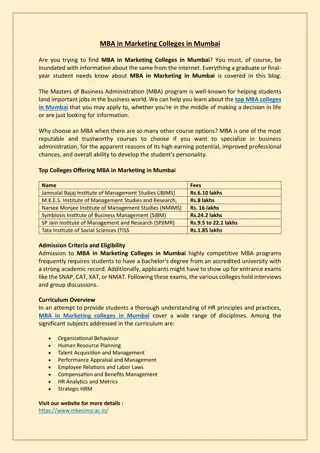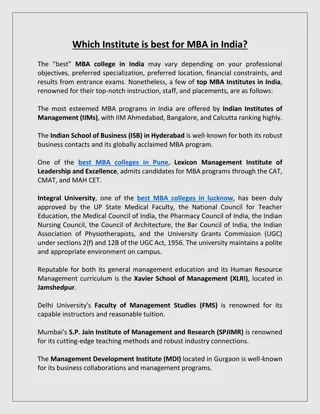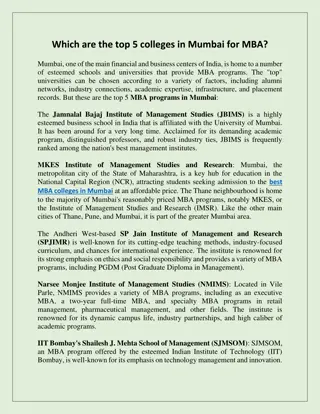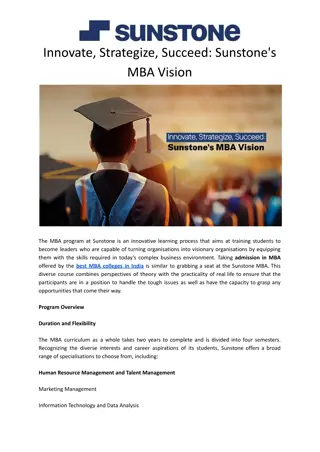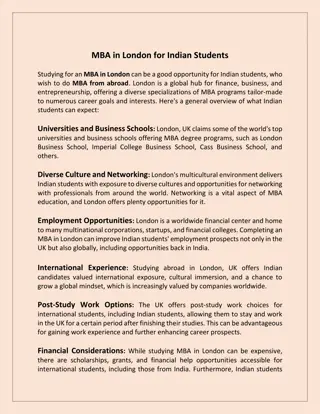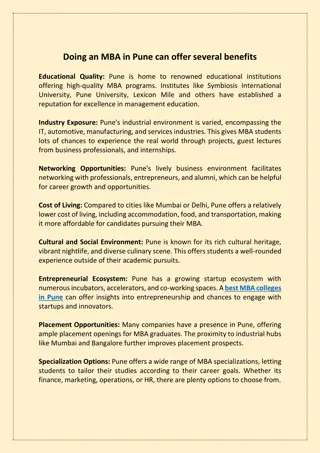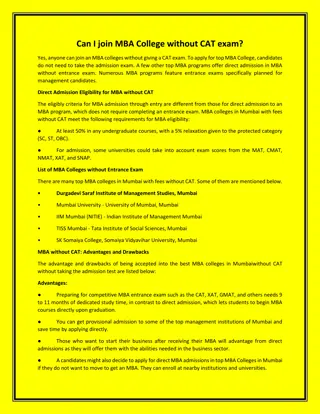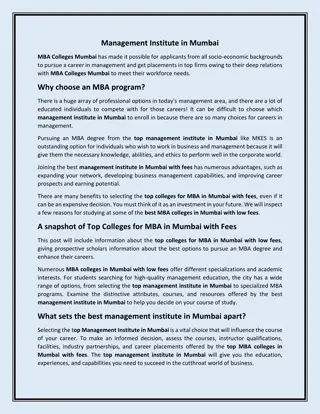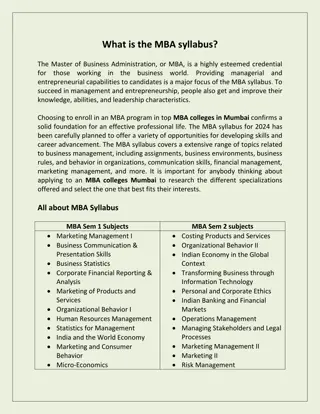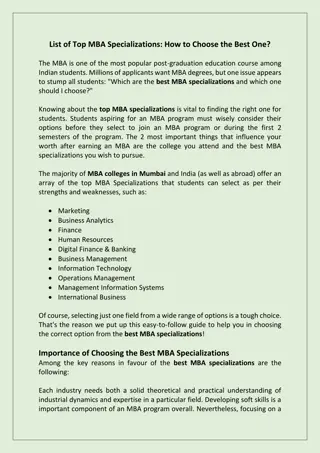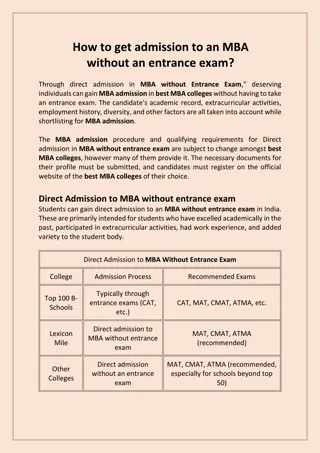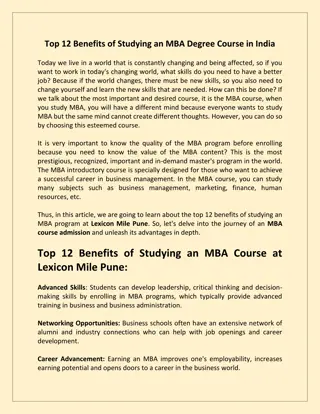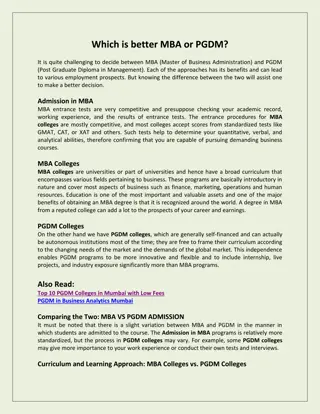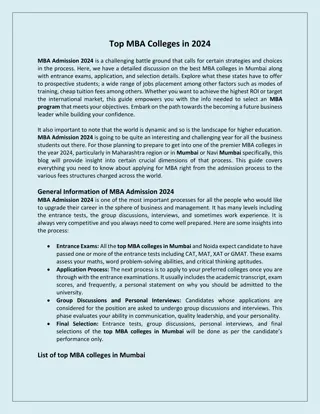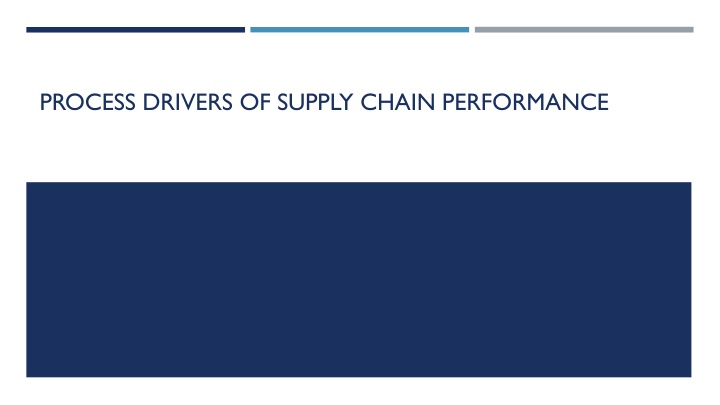
Supply Chain Performance Drivers
Discover the key process drivers of supply chain performance, including facilities, inventory management, transportation, and information exchange. Learn how these drivers impact efficiency and responsiveness in meeting customer demands, balancing cost and service levels effectively.
Download Presentation

Please find below an Image/Link to download the presentation.
The content on the website is provided AS IS for your information and personal use only. It may not be sold, licensed, or shared on other websites without obtaining consent from the author. If you encounter any issues during the download, it is possible that the publisher has removed the file from their server.
You are allowed to download the files provided on this website for personal or commercial use, subject to the condition that they are used lawfully. All files are the property of their respective owners.
The content on the website is provided AS IS for your information and personal use only. It may not be sold, licensed, or shared on other websites without obtaining consent from the author.
E N D
Presentation Transcript
INTRODUCTION TO SUPPLY CHAIN PERFORMANCE Definition of Supply Chain Performance: The ability of a supply chain to deliver products and services efficiently and effectively to meet customer demands. Importance of Performance Drivers: These drivers determine how well the supply chain operates and how it balances cost and service levels. Balancing Efficiency and Responsiveness: Efficiency focuses on minimizing costs, while responsiveness emphasizes quick adaptation to market demands.
KEY PROCESS DRIVERS OF SUPPLY CHAIN PERFORMANCE Facilities:Where products are produced, stored, and distributed. Inventory:The stock of materials and products held at different points in the supply chain. Transportation:The movement of goods between facilities and customers. Information: Data exchange and communication within the supply chain. Sourcing:The process of procuring goods and services from suppliers. Pricing: Strategies for determining the cost of products and services.
FACILITIES Definition: Physical locations for production, storage, and distribution. Types: Manufacturing plants: Where goods are produced. Warehouses: Storage facilities for raw materials, work-in-progress, and finished goods. Retail stores: Locations where customers purchase products. Impact on Performance: More facilities enhance responsiveness but increase operational costs. Centralized facilities reduce costs but may slow delivery times.
INVENTORY Definition: Stock of materials, components, and finished products held to meet customer demand. Types: Cycle Inventory: Stock required to fulfill regular demand. Safety Stock: Extra inventory kept to manage uncertainty. Seasonal Inventory: Stock maintained for demand fluctuations due to seasonal trends. Impact on Performance: High inventory improves responsiveness but increases holding costs. Lean inventory reduces costs but can risk stockouts. Techniques like Just-in-Time (JIT) help optimize inventory management.
TRANSPORTATION The movement of goods across the supply chain. Modes: Air: Fast but expensive, used for urgent deliveries. Sea: Cost-effective for bulk transport but slow. Road: Flexible and widely used for short- to medium-distance transport. Rail: Efficient for long-distance freight. Impact on Performance: Faster transportation increases responsiveness but raises costs. Optimizing routes and consolidating shipments can improve efficiency.
INFORMATION Definition: Data exchange and communication across the supply chain. Importance: Enables demand forecasting and better decision-making. Enhances coordination between suppliers, manufacturers, and retailers. Impact on Performance: Real-time data sharing improves responsiveness. Advanced technologies such as ERP, IoT, AI, and blockchain enhance transparency and efficiency.
SOURCING Definition:The process of selecting suppliers and procuring raw materials. Types: Single Sourcing: Dependence on one supplier for a product. Multiple Sourcing: Using several suppliers to reduce risk. Impact on Performance: Reliable suppliers improve efficiency and reduce disruptions. Balancing cost, quality, and reliability is key. Global sourcing offers cost advantages but increases risks related to logistics and political factors.
PRICING Definition: Strategy used to determine product prices. Types: Cost-Based Pricing: Setting prices based on production costs plus a profit margin. Demand-Based Pricing:Adjusting prices based on market demand. Competition-Based Pricing: Setting prices in response to competitors. Impact on Performance: Dynamic pricing enhances responsiveness by adjusting based on demand. Volume discounts encourage bulk purchases and optimize supply chain operations.
CONCLUSION Summary of Key Process Drivers: Facilities, Inventory, Transportation, Information, Sourcing, and Pricing. Importance of Alignment: Supply chain drivers should align with overall business strategy. Future Trends: Increased automation and digitalization. Greater emphasis on sustainability and resilience. Enhanced collaboration and real-time data sharing.


